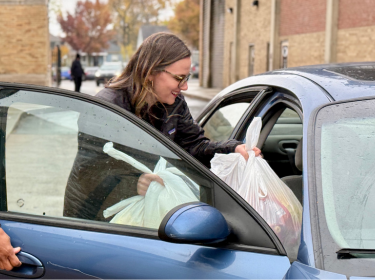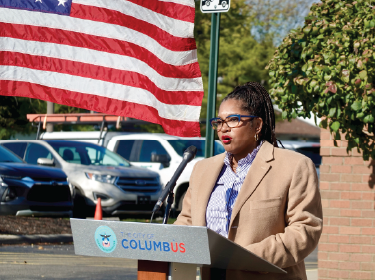Centennial High School Announcements
-
Show Your School Pride!
Show your school pride by purchasing a Centennial Stars t-shirt! Click here for more.

-
Watch our School Choice Fair video!
Interested in attending Centennial?
Come take a tour! Sign up using this form.
Questions? Reach out to Abbie Miller, Family Ambassador.
News
-

CCS Announces “Heat Up Your Attendance!” Challenge Winners
Columbus City Schools is proud to recognize the district’s most improved schools in November’s Heat Up Your Attendance! Challenge held November 10-December 12.
-

Columbus City Schools Continues to Distribute Food to Students at Five Sites on November 14
Superintendent & CEO Dr. Angela Chapman, staff and members of the Board of Elections will be helping hand out food at West High School from 4 to 6:00 p.m. on November 14.
-

Students, Staff, and Volunteers Unite to Feed Thousands of CCS Families During Government Shutdown
As a federal government shutdown pulled SNAP support from families across Franklin County, Columbus City Schools jumped into action, opening sites for emergency meal distribution.
-

A Healthy Partnership: OhioHealth and I Know I Can Empower CCS Students on Path to College and Careers
When our community comes together, our students go further. See how OhioHealth and I Know I Can are helping make that possible.
-

Columbus City Schools Distributes Food to Families in Need
Columbus City Schools, City of Columbus, and Franklin County Unite to Support Families Impacted by Federal SNAP Suspension.
-

Shaping Tomorrow Together: Highlights from Our Future, Our CCS Workshop Series
Over the course of three nights, Columbus City Schools (CCS) Superintendent and CEO Dr. Angela Chapman joined more than 650 parents, students and stakeholders for the Our Future, Our CCS Workshop Series to listen, learn and plan for the future.
-

Columbus City Schools Join City of Columbus, Franklin County and Mid-Ohio Food Collective to Support Families
In partnership with the City of Columbus, CCS will distribute more than 46,000 ready-to-eat meals to families affected by the federal shutdown.
-

National Principals Month: A Journey of Reflection and Purpose with Principal Christy Nickerson
As part of National Principals Month, learn about South High School Principal Christy Nickerson’s path to education and how it began with a conversation that changed everything.
-

Supt. Dr. Chapman Outlines Vision & Challenges at “Our Future, Our CCS” Public Workshops
Superintendent/CEO Dr. Angela Chapman opened the District’s Our Future, Our CCS workshop series Monday night at South High School, where she outlined her vision for the future of Columbus education.
-
Phone: (614) 365-5491
Email: centennialhs@columbus.k12.oh.us
School Hours: 7:30 a.m. - 2:30 p.m.Centennial High School
1441 Bethel Road
Columbus, OH 43220


